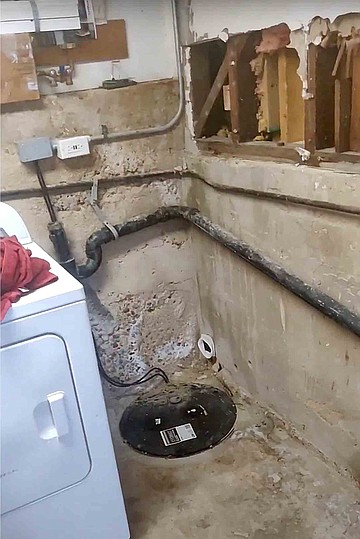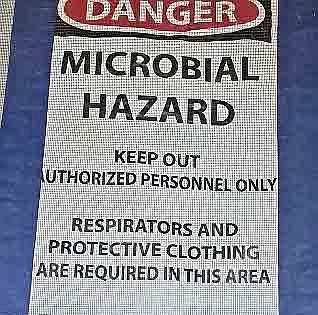Water man warns of danger from below
Was the recent flooding just a canary in a coal mine?
Rain tends to be welcomed in San Diego. It’s a desert! There’s a drought! The reservoirs are low! Soon we’ll be rationing! But then recent storms in San Diego flooded both homes and businesses. Not like this! And it wasn’t just because of the record rain day. We’ve had record rain days before, without nearly as much flooding. In fact, we’ve had recent record rains that haven’t caused as much damage — a number of them. Before the hurricane last year, the previous rainfall of 2022-2023 shattered records. (My rain gauge outside my La Mesa home measured over 40 inches of rain, far exceeding what was reported.) And some may recall that on a Friday in 2019, four inches of rain fell in a single day. In short, San Diego has experienced several years of above-average rain. And that’s a big part of the problem.
There is a lot of talk about “atmospheric rivers” and “accelerating man-made climate change.” The sky is falling! And it’s all our fault! Well, maybe. But the truth is, we’ve been here before. A crusty old professor on YouTube named Leon Hunsaker has posted a video called “The Legendary Floods of 1861 & 1862.” That flood, also known as The Great Flood of California, occurred after several years of above-average rain, such that the ground was saturated when a massive storm dumped over 10 feet of rain. Big Bear mining communities found themselves under three feet of snow. Some people were trapped for months. When spring came, a heat wave melted the enormous snowpack, and floods raged for weeks. Thousands died. Entire communities were washed away. The floods destroyed 25% of the inhabited real estate in California, and forced the moving of the state Capitol to higher ground.

The January storm brought more severe localized flooding than previous storms because the soil, much of it poorly draining clay, was already saturated. Not only could it not absorb more rain; the hydrostatic pressure from the water table pushed the groundwater up. Last spring, some areas of Clairemont made the news because the homes were literally flooding with groundwater. Water was pushing its way up into footings and crawlspaces, up through slabs, and into walls. And the groundwater problem is only made worse by things like poorly maintained infrastructure and bad engineering: blown-out sump pumps, backed-up gutters, clogged drains on public and private land. I work with water, and I hear things. One Encinitas homeowner I heard about hit the rare triple: a blocked storm drain on the street, water being diverted from the gutter by a trash can, and a garage set below street level. Water roared through her home with enough force to rearrange the furniture.
Sometimes, flooding means sopping carpets. Sometimes, it means ruinous mold. Sad about the former and terrified of the latter, homeowners call leak detection companies, only to find there is no leak in their pipes. Fire and flood companies come in, and usually, they remove the flooring and bottom two feet of drywall, set up fans and dehumidifiers, and tell people to look into improving their drainage. Homeowners call plumbers; they call landscapers. Sometimes, their solutions make matters worse, redirecting and concentrating the water flow.
As I said, I work with water. I see the result of having whole cities — La Mesa and Encinitas, for example — that have lousy plans for drainage, because the homes were built on what used to be farmland. It is not uncommon for homeowners in these areas to find out that they are in a flood zone, or that the large storm drains on their properties are older then they city in which they live. When those drains fail, people may be able to file a claim with their insurance company. But otherwise, they are on their own.

If we see anything even close to what happened in 1862 in the next year or two, the headlines will decry a man-made climate disaster. But they’ll miss the man-made disaster brought on by failures in civil planning and engineering. Marc Reisner’s Cadillac Desert describes how Los Angeles was sold and built before any proper water plan was made, which led to the creation of aging curiosities like the California aqueduct, which brings water to Southern California, but also allows millions of gallons to simply evaporate along the way. California was parceled out by land speculators who stuck oranges to the spines of a Joshua tree, took a photo, and told suckers back east that it was a fruit orchard. Then it was populated by people who thought they could have English manor lawns if they just ran their sprinklers long enough. Today, we see huge apartment complexes springing up all over the huge floodplain that is Mission Valley. Buy now! After all, 1862 was a long time ago!
Even if we all agree that people have an effect on climate and that pollution is terrible, the reality is that weather patterns over the last several years mirror the weather patterns leading up to the Great Flood of California. It should not be verboten to talk about weather-based calamities as natural and cyclical — and to plan accordingly. It looks me like our current flood and reconstruction problems are a canary in a coal mine — or maybe a sparrow in a storm drain. Imagine Mission Valley under 10 feet of water.